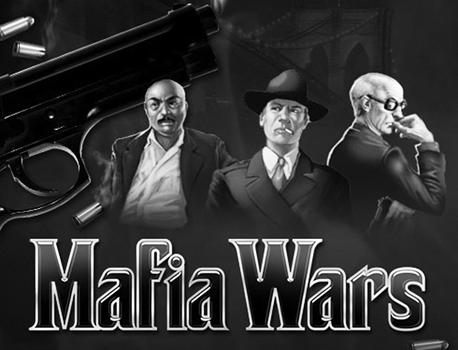How They Started (21 page)
Authors: David Lester

In these early days, Steve recalls, “We weren’t concerned with revenue. We were still working on trying to reach more users and find out ways to make the game fun, so they’d stay and keep playing.”
One possible funder that didn’t get on board was gaming industry leader Electronic Arts. … The games were all free?
To bring in some income during this initial ramp-up, Mark essentially sold
Texas HoldEm
’s traffic to other developers, who placed ads on the pages where Zynga’s Facebook games ran.
If players clicked on the ads, Zynga received a commission. The company collected just under $700,000 in revenue in 2007 this way. As Zynga’s traffic grew, this income stream became a rushing river.
By early 2008, Zynga reported its audience was clicking the ads 50,000 times a day, with Zynga pocketing 50 cents each time. Then, in March 2008, Zynga introduced the ability to buy virtual poker chips. To Mark’s surprise, some players spent $20 at a time.
Though fewer than 5 percent of players would spend real dollars to purchase virtual goods, the small purchases added up. Sales in 2008 leapt to $19.4 million. The company lost more than $22 million for the year, though, as it invested in more staff and Facebook ads to lure new players.
In July 2008, Zynga would raise $29 million more in venture capital and add $15.8 million more in November. The funding would help Zynga make a key purchase: YoVille, a game studio whose eponymous game would prove a major franchise for Zynga.
That fall, Zynga had its first big success with an original game. In
Mafia Wars
, players fought others as they built a mafia crew.
Mafia Wars
spawned a sequel, grew to eight million monthly users, and helped Zynga become the top Facebook app developer in April 2009. The company also moved onto other platforms with its first iPhone release,
Live Poker.
With business booming, Zynga moved to larger quarters a few blocks away from the Chip Factory.
Though fewer than 5 percent of players would spend real dollars to purchase virtual goods, the small purchases added up.
As the venture capital flowed in, Mark took careful steps to avoid diluting his ownership. He created private stock shares with stronger voting power than the common shares, ultimately retaining nearly 40 percent ownership of the company.
The next two years would see mind-boggling revenue growth. Sales shot up more than sixfold in 2009 to over $121 million, and would similarly skyrocket to nearly $600 million in 2010. But it would take until 2010 to achieve Mark’s second big goal: profits.

Mafia Wars
was Zynga’s first original game hit.
Zynga had a clear approach in running the business: measure and analyze everything. Interviewed for an online Wharton journal, Andrew recalled: “I believe the differentiator between Zynga and a lot of our competitors [was] the ability to test, analyze, optimize [and] repeat that cycle. Everybody at Zynga—developers, product managers, business people, executives, CEO, everybody—had that focus on metrics and transparency, which really did allow us to innovate quickly, test things really, really aggressively, and ultimately, kind of dominate this space … ”
In shaping Zynga’s corporate culture, Mark wanted to avoid creating the stifling environment he’d hated at his jobs. He empowered employees with an “everyone is a CEO” philosophy.
Wanting to pamper his hard-working staff, Mark hired a trainee chef from a nearby culinary school to serve up healthy lunches and dinners. The company offered on-site massage, acupuncture, paid gym memberships and other wellness perks.
Taking their lead from Mark, many employees brought their dogs to work. The company also had no traditional vacation rules. Instead, employees were encouraged to take time off as needed to rejuvenate and avoid burnout.
The next major game would be a game-changer. In summer 2009,
FarmVille
was an instant smash, becoming the first Facebook game to reach 10 million daily users. (The ensuing outpouring of status updates from
FarmVille
players pleading for game items proved so annoying to nonplayers that Facebook would later change its policy to limit the notices.)
But all was not well. Also in 2009, the pay-per-click advertising revenue model that allowed Zynga to log early revenue became notorious for scammy ads. Some automatically signed up visitors for monthly charges, for instance, while others had dubious product offers. At one point, the poker game gave users chips if they downloaded an advertiser’s toolbar, which then proved difficult to remove.
The scandal was dubbed “Scamville.” Some players filed a class-action lawsuit that would drag on for two years before finally being settled in Zynga’s favor.
In a talk given to entrepreneurs at the University of California, Berkeley, that year, Mark said, “I knew that I wanted to control my destiny … I did every horrible thing in the book to just get revenues right away.”

FarmVille was another instant smash for Zynga.
Coming as it did around the time the Scamville scandal broke, the remark was widely interpreted to mean Zynga knew and didn’t care that some advertisers were shady. But Mark later denied this, saying he simply meant entrepreneurs should keep their independence and focus on generating revenue quickly. Whatever he meant, the timing of the comment—filmed and widely circulated on YouTube—couldn’t have been worse.
Zynga responded by removing all ads from its platform in November 2009. Ads returned in January 2010, under a more stringent screening process. With the help of a media blitz similar to the one Mark pulled off at FreeLoader, the company rebuilt its reputation. Mark was a willing promoter, posing variously dressed up as a farmer to plug
FarmVille
and playing poker with Zinga.
The company also faced a steady drumbeat of criticism that its games ripped off those of other developers. Disney’s Playdom and the independent maker of
Mob Wars
were among many who sued and settled out of court. For its part, Zynga sued Playdom when seven of its employees defected to the company. Zynga alleged the ex-workers supplied Playdom with the “Zynga Playbook,” which outlined the company’s strategies and plans. This, too, would be quietly settled a year later.
Investors were unconcerned by the legal issues. At the end of 2009, Zynga raised $180 million from a new set of funders including Andreessen Horowitz and Russian mogul Yuri Milner’s Digital Sky Technologies. Another investor round from Google and Softbank Capital would pour in $300 million more in June 2010.
As 2010 rolled on, Zynga expanded with new games, new platforms, translations of games into foreign languages, and new geography. The company’s first foreign office opened in Bangalore. Zynga launched many new versions of its games, such as
FrontierVille
and
CityVille
. The latter, a permutation of the old
YoVille
game, would become Zynga’s most popular game ever.
The company also brought games to Yahoo! and the iPhone. Zynga began allowing corporations to advertise within its games—for instance, 7-Eleven introduced branded items inside
Farm Ville
,
Mafia Wars
and
YoVille
. Branded versions of Zynga games were also unveiled, tied to celebrities such as Lady Gaga and popular movie releases
Rango
and
Megamind
.
As Zynga became more successful, Facebook wanted a bigger cut of the take and wanted Zynga to switch from collecting cash payments to using Facebook Credits. The issue was resolved after a negotiation in May 2010 with the signing of a five-year agreement that saw Zynga switching to Facebook Credits and Facebook gaining a hefty 30 percent cut of the company’s Credits revenue.
Fortunately, Zynga’s growth rate was so massive that the effect of the cost hit was almost imperceptible. Sales grew nearly sixfold in 2010 to close to $600 million, and Zynga saw its first annual profit of nearly $28 million.
Where are they now?
In February 2011, Zynga topped $1 billion in venture capital raised with a massive, $485 million investment round that included Morgan Stanley, T. Rowe Price, Fidelity Investments, and Kleiner Perkins Caufield & Byers. Five months later, Zynga filed to go public, seeking to raise $1 billion. The company’s total value was estimated at between $15 billion and $20 billion. Revenue in 2011 was close to double the 2010 annual figure.
In late 2011, the company’s games had 232 million monthly users, and Zynga owned four of the top five games on Facebook. The company went on an acquisition spree in 2010 and 2011, spending nearly $27 million to snap up 14 other game producers including Wonderland Software and Newtoy. To accommodate its growth, the company moved into new quarters, expanding to more than 400,000 square feet of office space in San Francisco’s trendy SOMA (South of Market) neighborhood.
The company also faced down criticism that its business model was too dependent on Facebook. Zynga announced Project Z, a planned stand-alone website where Zynga games could be played. New games were slated including
Castle Ville
, the company’s most lavish game yet, with Hollywood-movie-level graphics and a full orchestral score.
Despite a late-2011 plunge in the US stock markets, Zynga went public in December 2011, raising a cool $1 billion in the biggest tech IPO since Google’s back in 2004.
Fast food grows a conscience
Founder:
Steve Ells
Age of founder:
28
Background:
Culinary Institute of America graduate and chef
Founded in:
1993
Headquarters:
Denver, Colarado
Business type:
Fast-casual restaurant
Steve Ells never dreamed of creating a fast-food chain
with more than 1,000 units. He wanted to open a fine-dining restaurant like Stars, the famed San Francisco restaurant of celebrity chef Jeremiah Tower, where Steve worked as a cook in the early 1990s. Steve had always been interested in food and remembers watching cooking shows on TV with his mom as a kid, rather than cartoons.
Instead, Steve ended up changing the face of fast food and helping to invent a new category in American dining: the fast-casual restaurant. He created Chipotle, one of the fastest-growing chains in America. Today, the company has more than 1,200 outlets in three countries and sales that top $2 billion.
This sort of chain-restaurant success was far from Steve’s mind when he started out. The Culinary Institute of America graduate didn’t have the cash up his sleeve to open the swank restaurant he envisioned, and he was looking for a venture that might generate the needed funds when he started noticing the long lines outside a cheap burrito eatery that he frequented in San Francisco’s Mission District. Steve read the menu and stood outside, counting heads.
He did the math and concluded the business was a cash machine. Steve decided to open a burrito place of his own, but with a couple of twists: the ingredients would be fine-dining quality, and everything would be prepared in the restaurant using classic cooking techniques. He’d use freshly chopped tomatoes, cilantro, black beans and house-made salsa to create a better-tasting burrito.
Steve returned to his hometown of Denver to investigate the idea of opening a burrito restaurant there.
“When I told my friends and family that I was leaving Stars to go open a burrito shop in Colorado, they thought I was crazy, but I had a very strong vision for the way Chipotle was going to look and taste and feel,” Steve says in a company video. “I knew it wasn’t going to be a typical fast-food restaurant—it was going to incorporate all the things I’d learned at the Culinary Institute and Stars.”
